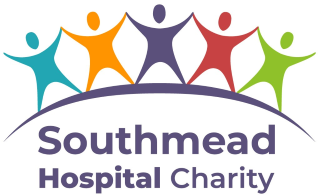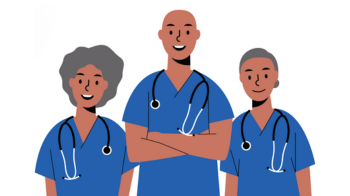Information for patients about anti-synthetase syndrome.
Anti-synthetase syndrome is an autoimmune disease. This means that the condition and the symptoms associated with it, are caused by your immune system being over-active. Anti-synthetase syndrome presents with a set of symptoms, together with the identification of one of several specific antibodies against your own cells, known as anti-synthetase autoantibodies. These autoantibodies are immune system proteins that target specific proteins within your own body (the tRNA synthetase enzymes).
Eight anti-synthetase antibodies have been identified so far as being significant in this disease. By far the most common of these is anti-Jo-1. Others include PL-7 and PL-12. Five additional anti-synthetase antibodies have been identified so far, but these are much rarer.
What are the symptoms?
Not all patients with anti-synthetase syndrome are the same. It is a spectrum condition, where there can be a mixture of symptoms, or some symptoms are more prominent. Symptoms associated with anti-synthetase syndrome include the following:
Interstitial Lung Disease (ILD)
As many as 75% of those with anti-synthetase syndrome have ILD. This may be the first or only symptom of the condition.
The ILDs are a group of lung diseases where there are varying degrees of lung inflammation or irreversible scarring (fibrosis) of the tissue around the air sacs (alveoli). In ILD it can be more difficult for the lungs to transfer oxygen into the bloodstream, and as a result, the body may not get the oxygen it needs to function properly. This can cause breathlessness and/or a cough from the irritation. Patients may also complain of fatigue. A ‘crackle’ sound is heard when listening to the chest with a stethoscope.
Muscle inflammation
Patients may experience muscle pain, fatigue and weakness. This typically affects the muscles across the shoulders and the pelvis/thighs.
Inflammatory arthritis
Patients may experience pain, stiffness, swelling, redness or warmth around joints. This typically affects small joints hands, feet but larger joints can be involved as well.
Fever
Some patients can present with a fever that is unrelated to infection or other causes.
Raynaud’s phenomenon
This is when very small blood vessels can spasm or constrict leading to reduced blood flow, typically involving the fingers and toes. The nose and ears can also be affected. These episodes are usually triggered by cold or stress. They can last several minutes to several hours and can cause the affected part to feel numb and cold and to turn white or blue.
Mechanic’s finger or hands
The skin on the sides of the fingers (usually just the thumb, index and middle fingers) becomes dry and cracked with characteristic thickening. It can be sore with broken areas.
What tests will I have?
Your specialists will take a detailed medical history and perform a thorough physical examination. You may be asked to have the following investigations:
- Chest X-ray.
- Lung function tests – breathing tests which so how well your lungs are working. These are used later to monitor your lung disease and how it is progressing. You may also be asked to have a walk test where you will be asked to rate your degree of breathlessness and measure your walking distance and oxygen levels.
- A CT scan of your chest shows a detailed picture of your lungs. There are characteristic features on the CT scan that can allow your specialist to identify either scarring or inflammation of lung tissue.
- A series of blood tests including a screen for specific autoantibodies related to CTD-ILD.
- Some people may also have a bronchoscopy, where a small flexible tube is passed down into your lungs, allowing collection of cells which may help with diagnosis.
- If you have joint and muscle symptoms, additional tests will include joint X-rays, ultrasound scans, and muscle MRI scans.
What treatment is available?
Treatments may differ depending on the symptoms you have, and your specialist will discuss whether a particular treatment is right for you.
Medications
Steroids are produced naturally in the body by the adrenal gland. Additional steroids in the form of prednisolone can be given to attempt to reduce inflammation in some patients. They are usually given in tablet form but may be given intravenously. If you are prescribed steroid tablets on a long-term basis, you should not stop them abruptly. You will be given a ‘steroid emergency card’ which you should always carry with you.
The specialist may also assess the need for bone protection medication and anti-reflux treatment whilst on steroids.
Immunosuppressive medication
Cyclophosphamide, Mycophenolate mofetil and Azathioprine are medications that modulate the immune system to achieve disease control.
When used with a corticosteroid such as prednisolone, it can also allow the dose of the steroid to be reduced and in some cases, may allow the steroids to be withdrawn altogether. As a result, they are sometimes also called a ‘steroid-sparing agent’. You will require regular blood tests to monitor your response to treatment.
New treatments are becoming available, and your specialist will decide upon these treatments on an individual basis.
Other medications and therapies are used to relieve symptoms, such as cough, breathlessness, joint and muscle pain and Raynaud’s. Your specialist will discuss options with you on an individual basis.
Other treatments
Pulmonary rehabilitation is a supervised exercise and education programme that can help you to learn to manage your breathlessness and remain active. The programmes are multidisciplinary, meaning that the team includes respiratory physiotherapists, nurses, dieticians, doctors and others, and can help improve your energy, strength, and quality of life.
As fibrosis inhibits an adequate supply of oxygen into the bloodstream, some individuals may require supplemental oxygen therapy. Where the levels of oxygen are low, oxygen therapy may help with breathlessness and enable individuals to be more active. Corrected levels of oxygen in the blood are necessary for normal body functions and reducing additional health problems.
You should also discuss with your physician if there are any clinical trials in which you can participate. Clinical trials are voluntary research studies, conducted in people, which are designed to answer specific questions about the safety and/or effectiveness of medications.
A small minority of patients may require assessment for and be suitable for lung transplantation.
How can I help myself?
Have your seasonal vaccinations (COVID-19 and Flu) and the pneumonia vaccination (you only have this once).
You may be eligible for a variety of benefits such as Attendance Allowance or Personal Independence Payment if you need help with personal care or getting about.
Our specialist nurse runs a regular Pulmonary Fibrosis Support Group which is a space for discussion with other patients with ILD. Here we also aim to provide several presentations from a variety of guest speakers and charities.
Keep active and do what you enjoy!
Further information and resources
Action for pulmonary fibrosis:
Home (actionpf.org)
British Lung Foundation:
Asthma + Lung UK (asthmaandlung.org.uk)
Versus Arthritis UK:
Versus Arthritis | A future free from arthritis
Myositis UK:
Home - Myositis UK
How to contact us
For ILD related queries:
Bristol Interstitial Disease Service
Respiratory admin 0117 414 7762
ILD@nbt.nhs.uk
For CLD related queries (not related to lungs/breathing):
Rheumatology advice 0117 414 0600
rheumatologyadviceline@nbt.nhs.uk
© North Bristol NHS Trust. This edition published May 2024. Review due May 2027. NBT003470.
Support your local hospital charity

See the impact we make across our hospitals and how you can be a part of it.

